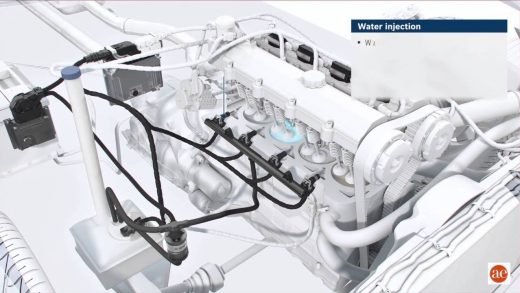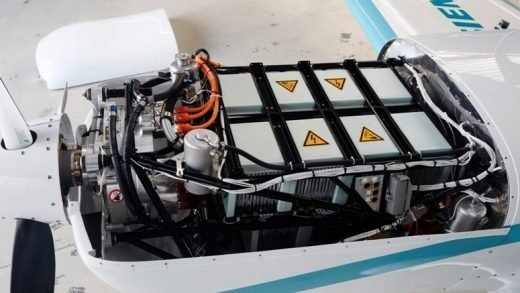5G mobile network sneak preview: 5G Berlin takes a look at the networks of tomorrow
The telecom industry plans to roll-out the first 5G networks from 2020. Fraunhofer FOKUS and Fraunhofer HHI are contributing their comprehensive know-how to a consortium of manufacturers, carriers and research institutions, who are working on prototypes for early-stage 5G communications infrastructure and features, and are aiming to implement these into the 5G Berlin test bed.
The 5th generation mobile network – “5G” – will play an important role in the communications systems of the future. Self-driving cars, Industry 4.0, the Internet of Things, the Tactile Internet for wireless, real-time control of machines: all of these visionary topics need a quantum leap in the efficiency, service scope and availability of mobile communication infrastructure and networks.
To ramp up and run 5G Berlin, Fraunhofer FOKUS and Fraunhofer HHI will build on their long-standing expertise in the design and roll-out of test beds, network technologies for radio, fiber and core, Future Internet and cloud-based service platforms, as well as software-defined radio and software-defined networking.
“We are offering a hands-on experience of the 5G world of tomorrow,” explains Prof. Thomas Magedanz, Head of the Next Generation Network Infrastructures (NGNI) Competence Center. “Although there is currently a lot of talk about revolutionary change, 5G will follow an evolutionary path.”
Compared to today’s 4G/LTE standards, the 5G air interface will enable the transfer of increasing data rates over the wireless channel. The targeted quantum leap of capacity boost by a factor of 1,000 – 10,000 requires a well aligned development path for wireless systems, network technology and services. This also has to include a globally harmonized spectrum. Since software will be the new paradigm to define air interfaces and network, 5G will become a cost-effective, highly flexible and “smart” technology.
As a continued evolution of current mobile communication systems 5G is currently understood as an umbrella covering the evolution of LTE, LTE-A and an integration of other wireless technologies. The following four pillars will become decisive in making 5G a success story.
Integration: Existing broadband mobile and fixed-line access networks – including Wi-Fi, LTE, satellite and DSL – have to be integrated seamlessly into the high-performance 5G core network (5G Packet Core).
Flexibility: Software-based technologies such as SDR (software-defined radio), SDN (software-defined networking) and NFV (network function virtualization) enable new programmable signal processing and network platforms, which allow network infrastructures to be created in the cloud with low-cost standard hardware. Networks can now adapt dynamically to meet new requirements, drastically reducing the lead times for the roll out of new services.
Versatility: 5G enables a wide variety of air interfaces and service plat-forms, whose network capacity and data rates can be adjusted dynamically on-demand to match application requirements. Alongside voice and multimedia applications, a strong commercial push will come from Machine-to-Machine (M2M) communications, the Internet of Things (IoT) and Industry 4.0.
Innovation: Technological innovations will solve the problems of today’s networks, which insufficiently scale with respect to user numbers and user demands, and suffer from crosswise interference as well as varying quality of service. 5G will also enable the rapid and effective launch of new and innovative business models. In particular, this will be decisive in meeting the demands of virtual network operators (e.g. traffic and energy management).
“5G Berlin is an open platform fostering the collaboration of research partners from the industry and academia. Our goal is to implement and test innovative 5G technology components and communication mechanisms in relevant use cases and realistic settings of the radio access and core network,” says Dr.-Ing. Thomas Haustein, Head of the Wireless Communications and Networks Department. “Within the scope of the Horizon 2020 5G Infrastructure Public Private Partnership, 5G Berlin will become an integral part of European research efforts into 5G technologies.”
Fraunhofer FOKUS and Fraunhofer HHI have been pioneering the testing of innovative broadcast technology, convergent network technologies and service platforms as independent partners for over 25 years. In their work with international manufacturers, network carriers and integrators, FOKUS and HHI researchers develop hardware and software prototypes, software tools and technology test beds for use in the validation and extension of forthcoming standards.
Prof. Thomas Magedanz: “Over the last 10 years, the OpenXXX tools and open-access test bed environments provided by Fraunhofer FOKUS have played a major role in the worldwide testing and roll-out of next-generation networks (OpenIMS) and LTE core networks (OpenEPC). Our modular OpenXXX tools and FUSECO Playground already enable us to offer technological simulations of 5G functionality. Long before the commercial roll-out, our customers and partners can prototype and test their products to verify that they work seamlessly together with other components in a 5G environment.”
Source: Fraunhofer Fokus
Photo/video source: Fraunhofer Fokus


 Foto: Wong Sze Fei/fotolia
Foto: Wong Sze Fei/fotolia






Recent Comments